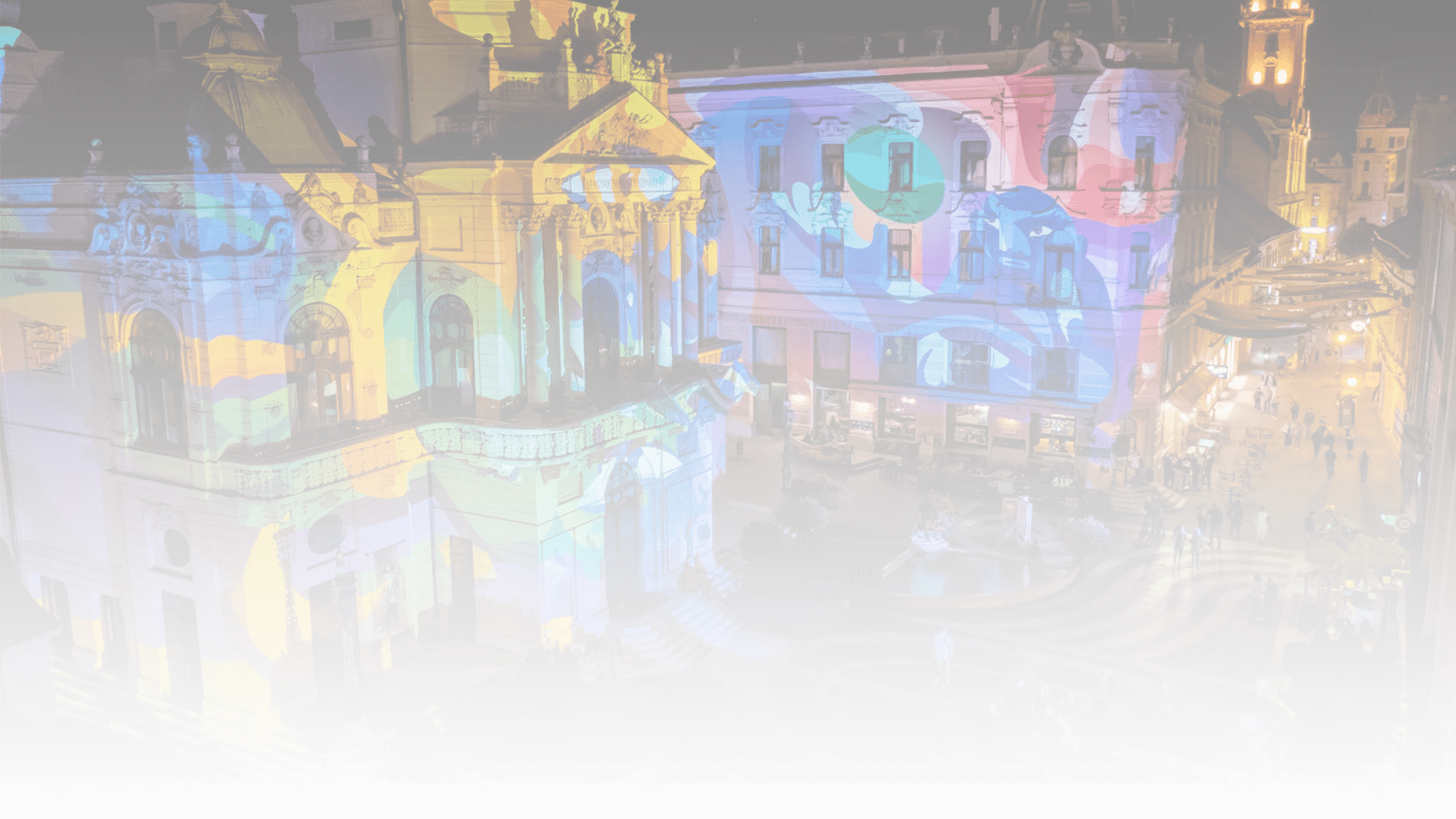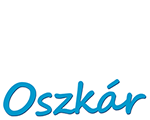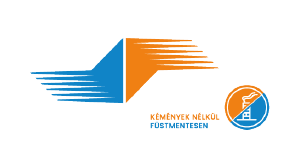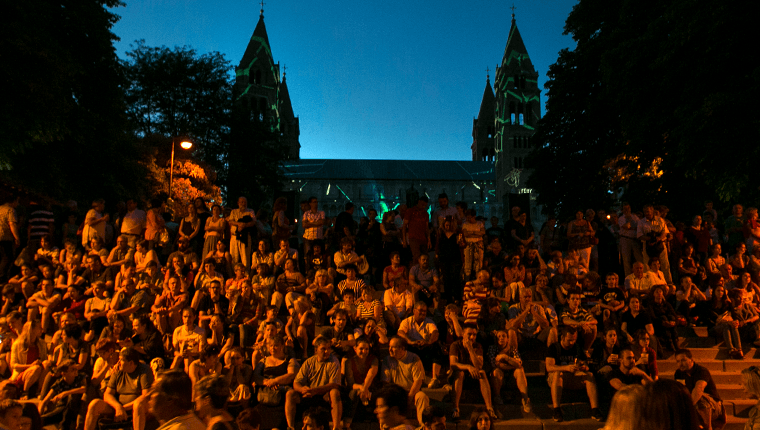| INVITATION | GUIDELINES | SUBMISSION |
ZSOLNAY LIGHT FESTIVAL X.
CALL FOR PROPOSALS
The Zsolnay Light Festival invites you to submit your application and have your creation included in the festival programme in the summer of 2026!
The deadline for submissions is 1 FEBRUARY 2026.
AIM OF THE COMPETITION
Between 2 and 5 July 2026, Hungary’s only light festival will celebrate its tenth edition in the city of Pécs. The organiser of the Zsolnay Light Festival (hereinafter ZSLF) announces an open call for participation in the Route of Light.
One of the most powerful experiences of the festival is the approximately 20-station light trail, the Route of Light. The Route of Light presents a wide spectrum of Hungarian and international light art, projection works and other light-based attractions. Visitors will encounter creations based on analogue and digital techniques, as well as static and interactive installations.
The primary aim of the ZSLF is to showcase artistic works that use light as a medium of artistic expression.
THEME OF THE COMPETITION
ZSLF is seeking works that speak to a broad audience — works that captivate, inspire, educate, and actively involve visitors, while reflecting on our preferred theme. The theme below serves as a guiding direction rather than a strict requirement; however, submissions that respond to it will be given priority during the selection process.
ZSLF invites future creators of the festival to collectively explore the following topic:
PLASTI-CITÉ // COLORFUL CITY
Victor Vasarely, the master who integrated the mechanisms of visual perception into art, the founder and defining figure of the Op Art movement, will be celebrated in 2026, marking the 120th anniversary of his birth.
Why is this significant for us, and why do we make Vasarely’s legacy the central concept of the festival’s jubilee call?
VASARELY 2026 - PÉCS
One of the most influential international figures of 20th-century visual art, Victor Vasarely was born in Pécs in 1906. His presence continues to shape the city’s cultural and artistic identity, and he stands as a symbol of local talent rising to global prominence.
Vasarely’s deep connection to Pécs is indisputable. In 1976, on his own initiative, the Vasarely Museum of Pécs was opened, and he donated hundreds of his works to his hometown. The museum — now celebrating its 50th anniversary - has since become a key institution of Pécs’ artistic life, representing the city’s modern and international spirit.
The city marks this double anniversary with a unified, large-scale programme series. The commemorative year is realised under the professional direction of the Janus Pannonius Museum, with the involvement of the University of Pécs, local cultural institutions, and the creative industry, in cooperation with the Municipality of Pécs.
THE COLORFUL CITY
Vasarely’s visual world forms a crucial historical foundation and source of inspiration for contemporary light art and digital art. His works, based on optical illusion, use the interplay of light and shadow to evoke the sensation of movement and spatial depth — transforming light into both a visual experience and a perceptual phenomenon.
In his practice, Vasarely sought to create a universal visual language, uniting the ideas of science, technology, and humanism. His works explore the sensory experience of movement, space, and light, while advocating for the democratisation of art.
For Vasarely, art carried social responsibility. Through the concept of “social art,” he emphasised that art must step out of elite galleries and become part of everyday environments. His vision was a world where art is not a privilege but a shared experience and collective value accessible to all.
For Vasarely, the expression "Colorful City" represented one of the core visions of contemporary art: a human-centred and inspiring environment where art is not mere decoration, but an active presence in daily life. He believed that the harmony created by vivid colours, geometric forms, and optical effects could positively influence well-being and social interaction. Thus, Colorful City remains both an aesthetic and humanistic programme — a vision still relevant today.
ZSOLNAY LIGHT FESTIVAL X.
Ten years of light. Ten years of encounters between art and audience, technology and human perception.
Our intention is for the jubilee of the Zsolnay Light Festival to be not only a round anniversary, but also a renewed opportunity to collectively reconsider what light means as an artistic and communal experience.
Just as Victor Vasarely placed the mechanisms of vision at the centre of art, the Light Festival transforms the city, its architecture, and its public spaces into sensory experiences. The vision of the Színes Város comes to life during the Festival: the city fills with light, movement, and human presence. Light becomes play, reflection, and shared experience — just as in Vasarely’s work, where visual experience was also a path to understanding.
APPLICATION PREFERENCES
In this jubilee edition, we welcome ideas for the indoor and outdoor stations of the Route of Light, with possible locations in the historic city centre and the Zsolnay Quarter.
We are primarily looking for works that alter visual perception, reshape architectural or spatial structures, and reinterpret the familiar.
Approaches based on algorithmic, modular, or generative design are considered an advantage, as well as any experimental technique, including those not yet traditionally associated with light art.
We seek works that engage with Vasarely’s legacy in a forward-looking way — not through imitation, but through reinterpretation filtered through the technological, sensory, and social conditions of the present.
A key evaluation criterion is the quality of site adaptation — how thoughtfully and effectively a piece relates to its location within the festival.
We are looking for light installations, kinetic structures, architectural or object projections, digital works, and interactive experiences that offer fresh perspectives on the relationship between light and perception, and that contribute to making the city more vibrant, open, and liveable.
Plasti-Cité is therefore not only a reflection on Victor Vasarely’s legacy, but also an invitation: to collectively imagine and create the Színes Város of the future — a city where light becomes a space for encounter, inspiration, and shared reflection.
CATEGORIES OF THE COMPETITION
Applications may be submitted in two categories:
ROUTE OF LIGHT
Works created with digital or analogue projection or lighting technologies that relate to the festival’s theme.
It is essential that works submitted in this category remain accessible to large audiences throughout the entire festival, over four evenings, for 4–5 hours per night, and that they provide a continuous, reliable experience.
LIGHT ARTIST CAMP
A distinguished component of the Route of Light is the Light Artist Camp, realised for the fourth time in 2026. Through this programme, the Light Festival is committed to presenting experimental works involving light and new media, aiming to provide development opportunities and professional visibility for emerging university-level creators.
This category is open to students currently enrolled in higher education. A core feature of the programme is that selected works receive professional consultation and technical assistance throughout their development and realisation.Works submitted in either category will generally appear as independent stations of the festival. However, the Organiser reserves the right — with the creator’s consent — to present certain works in grouped formats.
THIS YEAR, OUR CALL FOR APPLICATIONS SPECIFICALLY FOCUSES ON WORKS FOR THE ROUTE OF LIGHT. THE CREATORS OF THE ZSOLNAY LIGHT ART MAPPING COMPETITION ARE SELECTED BY INVITATION ONLY. APPLICATIONS FOR ALL OTHER PROGRAMME TYPES OF THE FESTIVAL MAY BE SUBMITTED TO: info@zsolnayfenyfesztival.hu
SCOPE OF APPLICANTS
ZSLF welcomes submissions from artists who have previously participated in the festival as well as first-time applicants. An artistic degree or previously completed works is not a strict requirement, although professional experience and proficiency may be an advantage. The competition is open to both individual creators and creative collectives.
EVALUATION CRITERIA OF THE APPLICATION
All submissions will be evaluated according to the following criteria:
- Originality of the idea, content, and execution
- Creative concept and artistic value
- Site-specificity and the relationship between the work and its physical environment
- Audience experience and engagement
- Interpretation and use of the theme
- Technical feasibility
- Cost-effective implementation
- Environmentally conscious approach
FORM OF SUPPORT
For the winning works, ZSLF undertakes to provide full financing of the presentation, based on a mutually agreed set of conditions.
Only expenses directly related to the realisation and presentation of the work may be included in the submitted budget.
The budget submitted with the application represents a significant component of the evaluation process, and the applicant agrees that the items listed are to be considered final.
Increases to the budget after submission may only be approved in exceptional cases.
ZSLF reserves the right to review and adjust budget items with selected applicants.
Where equipment or services can be provided through the festival’s own resources, the budget may be reduced accordingly, by mutual agreement.
inancial support will be provided after completion, upon receipt of an invoice, with a 30-day payment term.
A maximum 50% advance payment may be requested following the signing of the contract.
In addition to financing the project budget, the organiser provides accommodation for essential team members during the preparation period and throughout the festival.
SUBMISSION OF THE APPLICATION
To submit your application, register and complete our online application form, accessible via the Submit an application.
Only applications submitted through the online system, and completed in full, will be considered.
Applications submitted after the deadline or via email cannot be taken into account.
Before filling in the form, please ensure you have carefully read and understood the details of this open call and the Application Guide.
DEADLINE FOR SUBMISSION: 1 FEBRUARY 2026, 24:00 CET
For questions related to the application process or completing the form, please write to:
fenyutja@zsolnayfenyfeszival.hu
We welcome enquiries about feasibility, site-specific considerations, or any other professional support.
If needed, we also provide on-site visits and personal consultations.
Submit an application:
https://palyazat.zsolnayfenyfesztival.hu/
DECISION-MAKING AND ANNOUNCEMENT OF RESULTS
The ZSLF team makes its decision with the involvement of technical and artistic advisors.
All applicants will be notified of the results via email once the evaluation has concluded.
Announcement of results: 15 March 2026
CONTACT
We are happy to assist you during the compilation of your application. You can send your queries to the following e-mail fenyutja@zsolnayfenyfesztival.hu.
INFORMATION
More about the festival:
https://zsolnayfenyfesztival.hu




